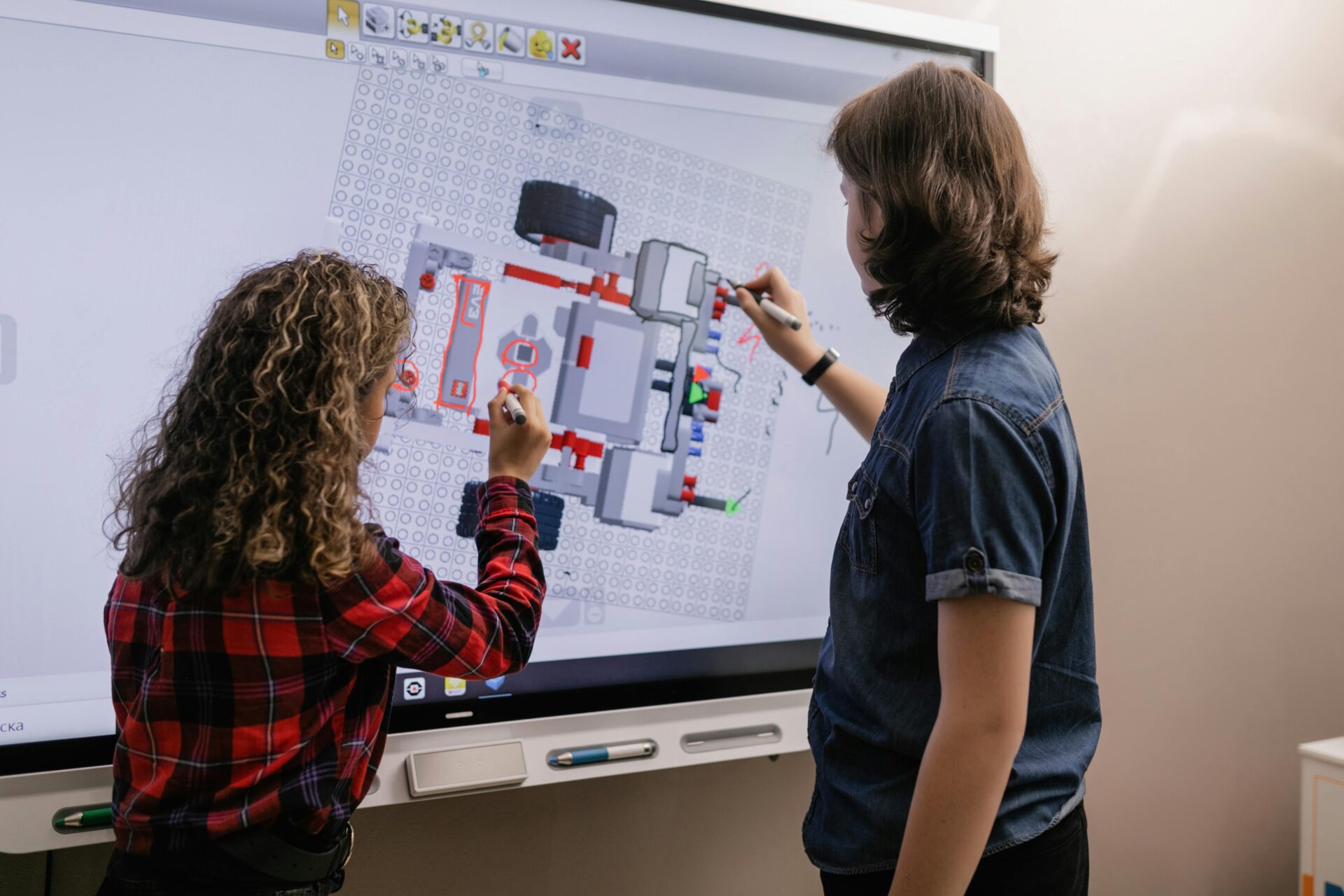Will AI replace public relations? What business leaders need to know

Isabelle Dann, Technology
This blog explores the role of AI in public relations, highlighting its potential benefits and limitations. While AI can automate tasks and enhance productivity, human creativity and storytelling remain irreplaceable in public relations (PR).
The proliferation of artificial intelligence (AI) presents countless new ways to get things done. In the workplace, AI can be harnessed to automate repetitive tasks, enhance decision-making, and improve productivity. Consequently, many business leaders are turning to automation as a strategy to reduce costs. According to McKinsey, 72% of organisations have adopted AI in at least one business function, with the PR and communications sector being no exception. Nonetheless, more than half (56%) of Fortune 500 companies cited AI as a risk factor – with media, software, and technology firms particularly concerned.
This raises a critical question: will AI replace PR? And, in turn, the need to partner with an agency?
Defining PR in the age of AI
Before answering, it’s essential to define PR. In a nutshell, PR is the pursuit of third-party endorsement through strategic media relations. This approach adds credibility to a brand, as positive commentary is more persuasive from an impartial source. In practice, this involves cultivating a keen eye for a story, which is vital for making company news compelling and creating proactive opportunities. Mastering these narrative skills is essential for success.
AI’s potential and limits in public relations
So, how can AI help here? Theoretically, AI can automate countless PR activities, including content creation and idea generation. However, getting the best results means knowing when to use this technology. Just because AI can be used for a specific task doesn’t mean it should. AI is a tool; its effectiveness depends on how we use it.
Key AI limitations include hallucinations – put simply, making something up – and potential biases. Additionally, the intersection of commercial interests and privacy concerns must not be overlooked.” If sensitive company data is mishandled and fed carelessly into a language learning model (LLM), the ramifications of an NDA breach could be colossal. As such, prioritising information security is paramount.
The human element: why creativity matters
Creative caution must also be taken. Asking ChatGPT to develop an article idea from scratch will likely prove a fruitless exercise because outputs from LLMs are, by nature, highly derivative and dependent on whatever data they’re fed. Regurgitating the past without looking to the future does not foster originality. This may change over time if artificial general intelligence (AGI) becomes a reality. However, while we’re in the safer realm of narrow AI, human creativity and curiosity are irreplaceable. Machines might excel at summarising established concepts but are less deft at metaphors, analogies, and other literary devices unless prompted. Similarly, because automated writing is usually formulaic, LLMs fail to deliver surprising and insightful narratives. They also can’t tell jokes. That’s why anyone who attempts to outsource original content writing to ChatGPT will find themselves disappointed. Similarly, PR professionals who make the mistake of leaning on ChatGPT for ideation, rather than summarisation, will stagnate.
Strategic use of AI in PR
Still, despite these limitations, AI can unlock significant advantages when used appropriately in PR. Asking ChatGPT to help brainstorm headlines for an article is a different story, because it’s a way of packaging up and boosting human-written content. Similarly, plugging a human-written article into ChatGPT can make it more SEO-friendly by automating the creation of title tags, meta descriptions, H tags, and social posts. Humans should still edit these outputs, but they’re a useful starting point when amplifying content.
Transcribing meetings automatically – from client briefing calls to internal training sessions – is another ideal use case for AI in PR. Popular paid tools include Otter.ai and Microsoft Teams’ built-in transcription capabilities. Voice typing on Google Docs is a handy trick for anyone lacking the budget for subscriptions.
AI also helps speed up research through tools like Perplexity AI, a research and conversational search engine that answers queries with natural language predictive text. This makes PRs better at their jobs by granting access to data swiftly and concisely. Pitches to journalists are more convincing when injected with evidence. More broadly, reading widely nurtures writing.
Further use cases include automated media monitoring and sentiment analysis through tools like Signal AI, advancing reporting efforts. As a result, PRs have more time to carve out new opportunities for clients.
Why storytelling will always need humans
Across industries, AI shines when augmenting – rather than replacing – human efforts. PR and marketing professionals alike must be judicious about using AI, taking ethical, commercial, and creative care. In turn, C-suite leaders should avoid falling for short-term financial gains and continue investing in people. Let’s not forget, alongside building brand awareness, lead generation is often a long-term goal of PR efforts. With that in mind, it’s crucial to remember that people buy from people. Throughout my years of industry experience, I’ve found that if there’s no human element in a story – whether the medium is journalism, a conference, or a company website – nobody will buy it.
Ultimately, good PR rests on storytelling. A good story must provoke intrigue, compelling the audience to want to learn more. In the nineteenth century, Charles Dickens published his novels serially, so his stories appeared in episodic instalments rather than all at once. In addition to leaving readers craving more content – much like a Netflix cliffhanger – this serialisation fostered a deeper emotional connection. Ardent fans wrote to Dickens and each other in a frenzy to discuss a novel’s latest developments, akin to people posting on Reddit and social media today.
People’s appetite for stories remains as voracious as ever, whether accessed through books, earned media, video games, or podcasts. Successful storytelling – regardless of the method used – provokes genuine engagement and creates an authentic connection.
AI compels us to rethink the development of humanity. As technology advances and enhances our natural abilities, the demand for human-led storytelling will only increase. Storytelling is inextricably linked with human culture and progress; the stories we tell reflect and reshape our changing identities. Relying on AI for this will yield poor – and, most critically, uninspired – results.
About the author:
Izzy started her career as a journalist and now helps tech founders, C-suite leaders, and investors tell their stories and grow their brands. Blending expert counsel, strong media relationships, and compelling content, Izzy excels in creative ideas and strategy. Alongside earned media expertise, Izzy also produces in-depth reports. Sector specialisms include venture capital, cybersecurity, and deep tech, including AI, life sciences, and clean energy.
You can find her on LinkedIn here.
Key Takeaways:
Q1: Can AI fully replace PR professionals?
A1: No, AI cannot fully replace PR professionals. While AI can automate certain tasks, human creativity, intuition, and storytelling are vital components of effective PR that AI cannot replicate.
Q2: What are the limitations of using AI in PR?
A2: AI has limitations like hallucinations, potential biases, and a lack of originality. It struggles with creative tasks like generating metaphors and crafting compelling narratives.
Q3: How can AI be effectively used in PR?
A3: AI is best used to automate repetitive tasks, enhance content with SEO-friendly elements, transcribe meetings, and assist in research. However, human oversight is essential to maintain quality and originality.
Bibliography:
- McKinsey: The state of AI in early 2024: Gen AI adoption spikes and starts to generate value
- Aspectus Group: Award-winning public relations for global business
- Financial Times: Biggest US companies warn of growing AI risk
- Aspectus Group: Why is media relations important? Lessons from Covid-19 and beyond
- The Guardian: Why Charles Dickens’ novels make great TV

















